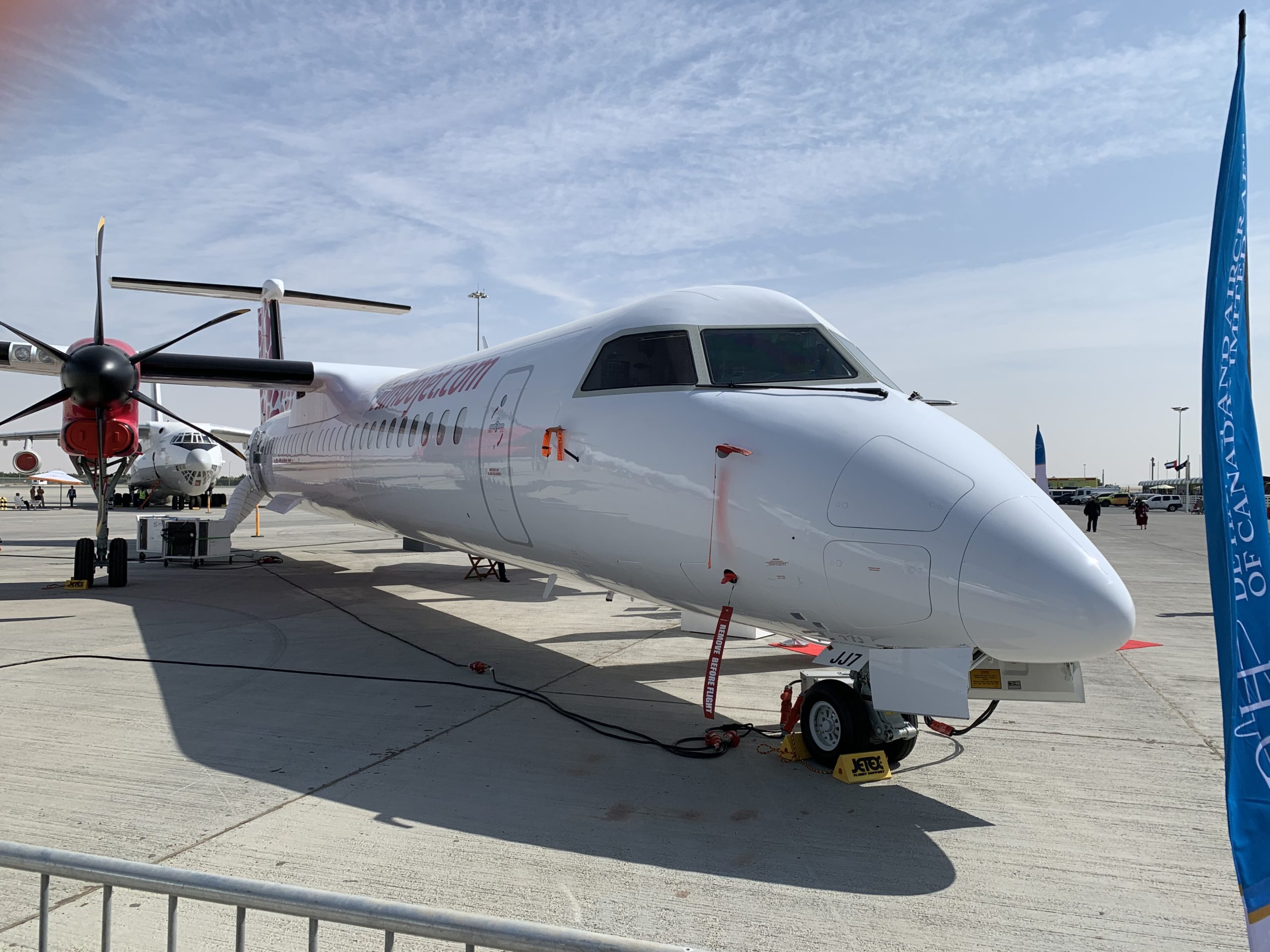
DeHavilland scaled
UPDATE – A consortium in The Netherlands has received financial backing to develop a hydrogen-based regional turboprop aircraft that should be available in 2028. An artist graphic indicates that the project is based on De Havilland Canada Dash 8-400, which would make it a competitor to the plans of Universal Hydrogen. Dutch hydrogen capsule project targets 2028 EIS.
The Dutch project, which was announced on June 13, is called Hydrogen Aircraft Powertrain and Storage Systems (HAPSS). It is a cooperation between Unified International, a Dutch strategic business development support agency, and Innovation Quarter, which is a development vehicle of the province of Zuid-Holland. HAPSS is supported by Fokker Techniek, the Technical University of Delft, and the Dutch Aerospace Center NLR. Also involved in regulatory oversight and certification are the Dutch regulatory agency ILT and EASA.
The project has received a €110 million government subsidy, which is conditional on getting a similar investment from private or institutional investors. The subsidy is part of the National Growth Fund, in which €383 million is available for projects related to sustainable aviation.
From the graphic that HAPPS shared with the media release, it becomes evident that the project is currently based on a Dash 8-400 with between 40 and 80 seats. Bert Klarus, Senior Business Developer Aerospace of Innovation Quarter, adds: “The plane in the graphic isn’t an exact Dash 8 but looks very much like it. But it is true, the project is based on the Dash 8-400 and we are in close contact with DHC.”
Liquid hydrogen capsules are positioned aft inside the fuselage. Whether they will be interchangeable as on the Universal Hydrogen concept hasn’t been decided by the HAPSS engineering team, says Klarus: “We haven’t decided yet. We have studied the Universal concept, we even got their presentation, and it is indeed a big logistical advantage if you can swap capsules on the spot. But if you can do it safely in an airport environment remains to be seen. There is always a risk in getting the connections right.”
The aircraft uses fuel cells to convert the liquid hydrogen into electricity, which powers the two electric motors that replace the Pratt & Whitney turboprops. The graphic identifies Zepp Solutions as the supplier of the fuel cells and thermal management system, which is a critical part of a hydrogen airliner. Other suppliers are Brookx Company for the control system and Saluqi for the electric drivers. The aircraft will also get different propellers.
Klarus confirms that parts of the HAPSS system could be offered as a hybrid system to Boeing, Airbus, and Embraer, for use on their aircraft. Either as a retrofit or maybe on a new aircraft model, of which Klarus identifies the new Embraer turboprop as an interesting prospect.
Regulatory approval likely to be the bottleneck
The release says that the hydrogen system will be tested in a laboratory environment in 2025. Commercial services of the green hydrogen aircraft between Amsterdam and London should commence in 2028. “But I can’t deny that the certification of the system could be a bottleneck, not the technology itself. At the same time, regulators are involved in various hydrogen projects for some time, including ZeroAvia and Airbus. Our concept and those of ZeroAvia and Universal Hydrogen look identical, which is fine. That more companies are working on the same technology could be beneficial and help get things done quicker.” HAPSS optimistically claims the project will create 1.200 jobs and unlocks a potential market worth €16 billion.
The involvement of Fokker is through Fokker Techniek in Hoogerheide, which is part of the Dutch Panta Holding. “They have a huge engineering pool and are renowned for their knowledge on aircraft modifications and conversions. That is a huge asset to the Dutch aviation industry and to this program.”, Bert Klarus says. Another Fokker company, Fokker Technologies, is now part of GKN Aerospace, which works on its own hydrogen fuel cell and direct injection technology programs.
Universal Hydrogen announced last week that it had signed a firm order with Connect Airlines for the conversion of up to 100 ATR 72-600s with hydrogen capsules. Universal plans to have its system certified in 2025. Universal is also working on a project based on the Dash 8-400. The Canadian airframer is involved in a fuel cell project with ZeroAvia and Alaska Airlines.
Views: 20




